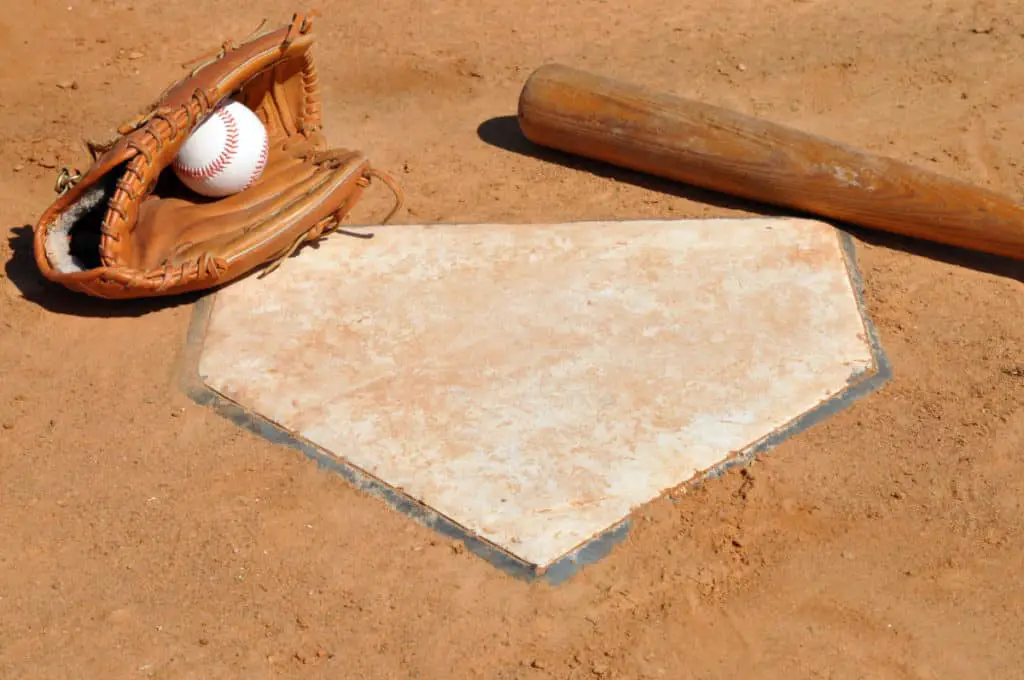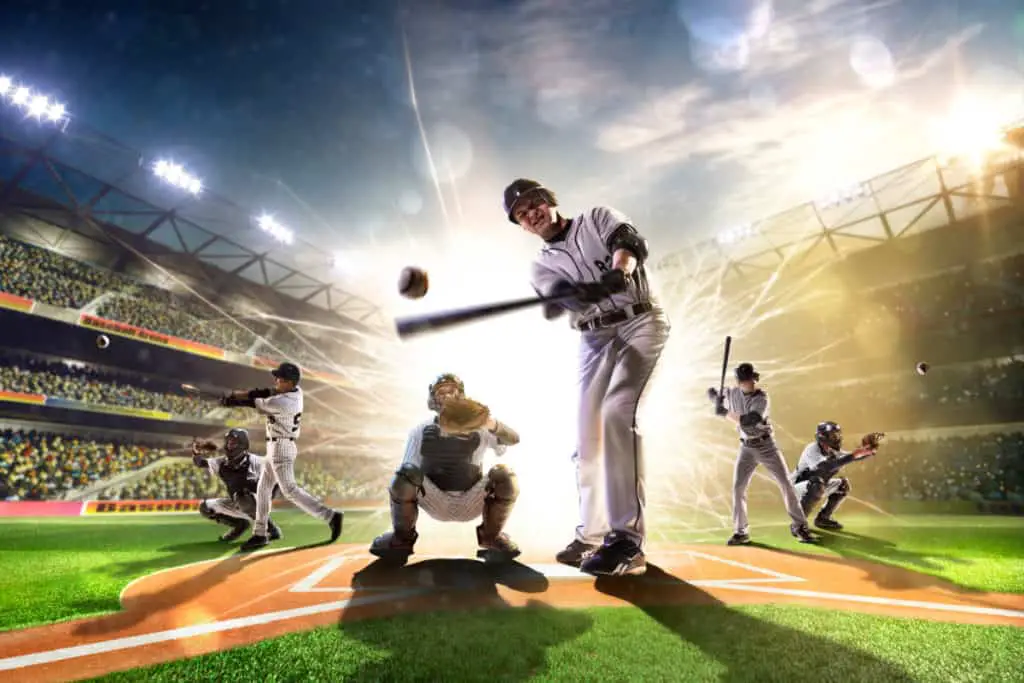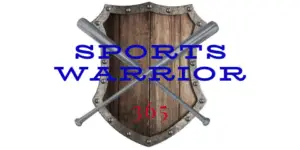Baseball can be a difficult game. Even the best hitters in Major league baseball only get a hit 30% of the time, which is displayed as a .300 batting average. The truth is that almost all hitters fail more often than they are successful.
As a result, hitters will try to find any legal advantage that they can. Batting gloves are one option that many baseball players choose to use, although there are still some that prefer a natural grip.

Why Do Baseball Players Wear Batting Gloves?
Baseball players wear batting gloves for several reasons. The first reason is for an increased quality of grip on the bat. A baseball player is swinging the bat close to as hard as he can. He needs the best grip possible and batting gloves can provide this.
A second reason is that it can help reduce the sting of a ball hit in cold weather or not on the center of the bat. A third reason if the hands of the player are sore from over use from extra batting practice or training.
Below we will provide a complete overview on everything batting gloves related and we finish with 3 tips to help you become a better hitter. The topics include:
- Should you wear batting gloves
- Which batting gloves are the best
- Do little league players need batting gloves
- What are other options from batting gloves
- Should you wear your batting gloves in the field
- 3 tips to help you hit better
- Related questions
Should You Wear Batting Gloves?
Everyone has a different feel when at the plate. Here at sportswarrior365, we would recommend taking batting practice with both and testing which one feels better.
If you are someone that prefers going without batting gloves, you might consider still having a pair for different situations. Below we have a chart to help you pick those situations. The reality is that each game brings about new situations with the weather, the pitcher, and the overall variable that might impact whether you want a pair of batting gloves.
The majority of Major League Baseball players wear batting gloves and use pine tar to provide the best possible grip. The last thing you want to be concerned about while at the plate is if you have a good grip. If you mind is focused on your grip, chances are you will not have a quality at bat.
Here is a chart to help you determine if you should wear batting gloves. As you will see in the chart below, where you live has a big impact. Having played little league and high school baseball in Ohio, we played in extreme weather conditions.
During the spring the temperature could be in the 30s. Talk about stinging hands if you catch the ball on the handle or the end. Or we could be playing in 90 degree high humidity situations where you couldn’t stop dripping sweat.
One other factor that impacts the decisions is if you are someone that practices a ton and your skin is beat up. After hours and hours of drills or batting practice, one’s hands might not be able to handle the wear and tear. Batting gloves are highly beneficial in this case.
Check out the situations below for your complete guide.
| Situation | Importance Level for Batting Gloves (1-5 scale) |
| Wet or rainy conditions | 5 |
| Temperature below 50 degrees | 5 |
| Temperature over 80 degrees | 5 |
| High Humidity Levels | 5 |
| Perfect Playing Conditions | 1 (Based on preference) |
| Blistered Hands | 5 |
Which Batting Gloves Are The Best?
There are many quality products on the market today. You have plenty of options. Some prefer to go by feel like some younger players like certain looks and want to combine the best feeling gloves with the best looking gloves.
Many little leaguers want to be like the professionals and wear the brand their favorite pro player wears.
Here is a chart with different options with a $ sign to symbolize the price range.
| Brand | Level | Price Range |
| Franklin Sports Powerstrap | Premium | $$$$$ |
| Franklin Sports MLB CFX | Premium | $$$$$ |
| Franklin Sports Neo Classic | Mid | $$$ |
| Franklin Sports 2nd skinz | Low | $ |
| Easton VRS Powerboost | Mid | $$$ |
| EVO Shield Protective Stripe | Premium | $$$$ |
| Primal Baseball Power Stones | Mid | $$$ |
| Under Armour Men’s Harper | Premium | $$$$ |
| Easton Gametime Batting Glove | Mid | $$ |
There are many options, the more expensive the price, typically the thicker the glove and the better the overall material. If you have a little league, a lower end glove might not be a bad option as the chances of losing them within the first week or leaving them out in the rain are pretty high.
As players get older and more responsible it might be worth the high level investment. Many of the manufacturers sell some pretty impressive looking and performing gloves.
If you want your kid to fit in, go ahead and buy them the top level. Just make sure you put their name on them as other players will probably have similar levels of gloves.

Do Little League Players Need Batting Gloves?
Do they need them…no. Could they help performance…yes. Will your kid want a pair when everyone else has a pair…yes. I would start with the more inexpensive pair as they might lose them or not prefer to use them.
Many times the chaos of a dugout can bring about a quick at bat or your kid looking for his batting gloves under the bench. Make sure your kid has a system of where to put the gloves between at bats and when they are in the field.
What Are Other Options to Batting Gloves?
Pine tar is very popular in the major leagues. You will often see it caked all over the bats and the helmets of major league players. The pine tar is a sticky substance that provides an awesome grip on a bat. Here is a full post on why baseball players use pine tar.
Pine tar comes from trees and provides the ultimate grip when combined with batting gloves. Be careful how much you use and test it out in batting practice. The pine tar is especially helpful on those hot humid days when the sweat is dripping everywhere.
Should You Wear Your Batting Gloves in the Field?
Many players prefer to keep their glove hand batting glove on when fielding. This is often a matter of preference. As someone that played a lot of catcher growing up, I would recommend the catcher and first baseman wear a batting glove for sure when in the field.
This helps provide an extra level of protection as the catcher hand is pounded with fast balls on a regular basis. When I played middle infield I didn’t like the glove underneath as it took away a little bit of feel. I wanted to be able to feel the ball in my glove and the batting glove took away some of that feeling.
As an infielder it is important to have soft hands and a great feel for the ball. The transition often has to happen quickly.

3 Tips to Hit Better
Whether you decide to use batting gloves or not. Our ultimate recommendation is to buy a set and have them as a go to depending on the situation of each game or even if the weather changes during a game, we provide three helpful tips to help you improve your game.
At sportswarrior365, we love the game of baseball and have helped many players during our coaching careers. We have coached little league up to Varsity Baseball. Hitting takes many reps and a dedication.
Here are three drills you can do to help you improve. Baseball is a highly skilled game and it is important to have the proper mechanics and repetitions to get better.
#1 Tip – Mechanics
The proper mechanics are vital to your success. Too many people pass on bad information, such as, “keep your elbow up.” The problem is that many people played little league and believe they know what a swing should look like. We turn to the experts on swing mechanics. This video belows lines up with our philosophy on hitting.
#2 Tip – Timing
Timing in baseball is everything. If your timing is off or you aren’t seeing the ball out of the pitchers hand, bad timing can make for a long day and a potential slump.
The key is to continue to take some reps and work towards getting your timing down. Too often we get out on our front foot when hitting. We would recommend staying up the middle to backside if you hare struggling with timing.
This helps you see the ball longer and stay on the ball. Too often we step early and pull off the ball and never see it. This makes it feel like we have a huge gap in our swing. Focus on hitting the ball backside and stay on the ball. Here is a video to help with timing:
#3 Tip – Practice/Utilize Drills
Baseball is a highly skilled sport. It takes a lot of practice to get good at hitting. To keep your game sharp, make sure you are doing hitting drills on days when you are not playing.
Did you know it takes 10,000 hours to become an expert at something? Baseball is not different. Too many players want to just show up to the game and play.
One of the great things we loved about playing baseball and coaching baseball is the time we spent hitting batting practice and working on drills. If you are someone who practices a lot with drills and batting practice, the batting gloves might help for this situations as well.
Here are 7 drills that you can use to grow your game.
Related Questions
Should I wear one glove or two batting gloves?
This is a preference situation again. If you are only going to wear one, you would wear the glove on your left hand. Many hitters prefer two batting gloves. Others might decide to go with one batting glove and use a decent amount of pine tar.
When did baseball players start wearing batting gloves?
In 1964, Ken Harrelson first started wearing batting gloves to protect the hands from blisters. The amount of batting practice that major league baseball players and even some youngsters take can impact and increase the need for batting gloves.
MLB players who don’t wear batting gloves?
There are always a handful of players who prefer the no batting glove approach. Some that quickly come to mind include: Evan Gattis, Colby Rasmus, Matt Carpenter and Will Myers. A player from the past that also comes to mind from the 1997 World Series Champions Florida Marlins is Moises Alou. He could surely hit.
How to care for batting gloves?
Make sure you let your batting gloves air dry and store them in a safe place. Taking good care of your investment will help them last longer.
Make sure they are dry before stuffing away in some pocket, especially if the game brought about some wet conditions. Between at bats a player would put the gloves in their back pocket and have easy access to them during the game.
Take Action…
Baseball is a fun game. Find a way to get better and work on your game consistently. A great deal of baseball comes down to hand eye coordination.
Playing other sports will help with hand eye coordination and your overall athletic ability. Stay active in as many sports as possible and enjoy the opportunities to compete.
Too many players specialize in one sport and cut down on opportunities to learn and grow from cross training.
Check out our other baseball related posts, here.
